Over 2,000 people gathered at Newgrange in Co Meath for the Winter Solstice - the astronomical phenomenon that marks the shortest day and the longest night of the year.
Despite the sun finally breaking through the cloud this morning, it was too late to fully illuminate the Neolithic tomb's central chamber but that did not dampen the spirits of the largest crowd to attend the Winter Solstice at Newgrange in over ten years.
Organisers put this year's spike in attendance largely down to the fact that 21 December fell on a Saturday.
Cloud cover meant that for the majority of the 17-minute window during which time the chamber can be illuminated, it lay in darkness.
However, with just a few minutes to go, the clouds parted and a small chunk of sunlight could be seen inside the chamber, meaning the morning finished on a high for both those inside and outside the Newgrange monument.
Some 18,500 people entered a lottery to witness the unique solar event first-hand but just 16 lucky ticket holders were granted access to the passage tomb’s central chamber.
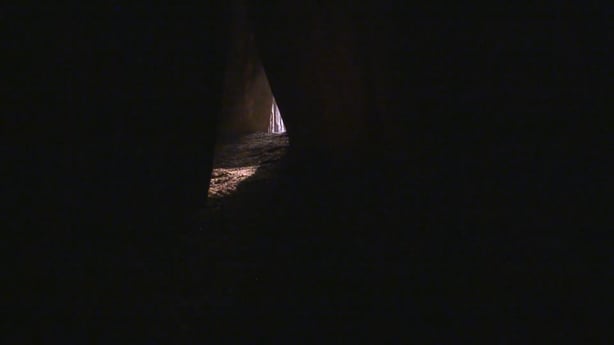
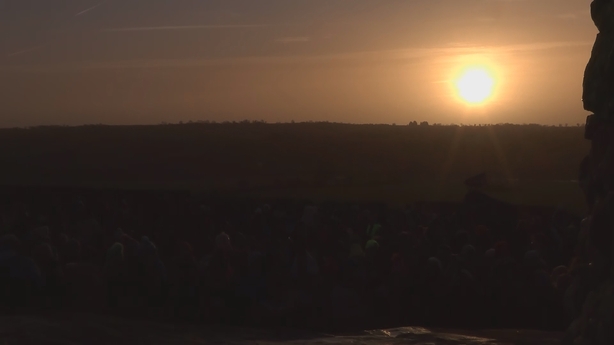
They hailed from Donegal, Dublin, Meath and further afield in the US.
Meanwhile, viewers from around the world watched the morning sunrise by tuning into a livestream as the thousands on-site gathered outside the 5,000-year-old passage tomb in a celebration of song and dance to mark the climax of winter.
The Office of Public Works said that over 28,000 people from all over the world watched the morning sunrise by tuning into the livestream on its YouTube channel alone, including from places as far away as New Zealand.
Jon Krolewicz and Meagan Nowack from South Carolina in the US visited Newgrange last year and entered the lottery to be inside the chamber for the Winter Solstice.
Speaking after the sunrise this morning, Ms Nowack outlined why the couple felt they had to return to Ireland for a second time in two years.
"It was still obviously worth coming. We didn't care what the weather was, we were just glad to be able to be in there and felt lucky and privileged enough to be in the chamber during the solstice.
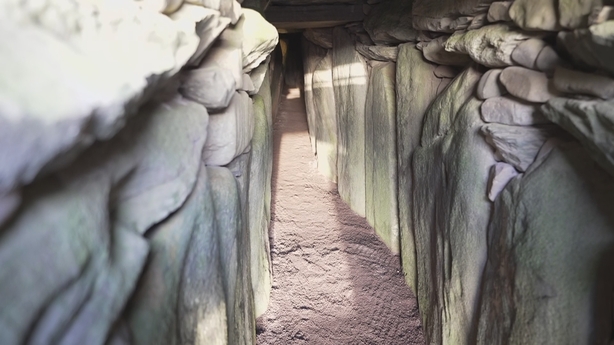
"We did get sunlight. I know it probably wasn't as bright maybe as they had on Thursday but we were still able to really see it and appreciate that."
Ms Nowack also described what it was liked to be in the chamber this morning.
"You have moments of silence in there where you are just kind of contemplating to yourself and appreciating being in there, thinking of the history and what it was used for and the people who have come before you and that you are doing the same thing that your ancestors did all those thousands of years ago.
"It's a really kind of, I don’t want to say intense [experience] but you definitely feel it."
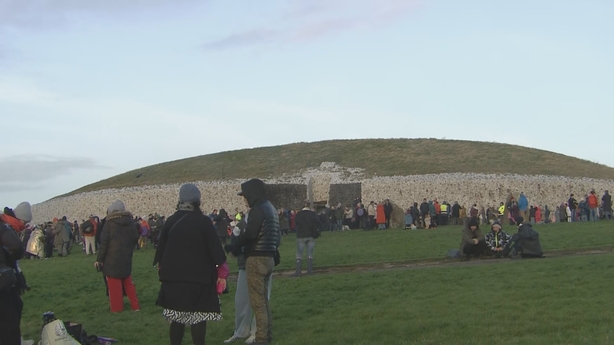
When the sun is specifically 23.5 degrees south in latitude and directly over the Tropic of Capricorn, which occurs on and around 21 December each year, the Winter Solstice takes place.
At its farthest southerly point, having moved slowly since last June, the sun "stops" for approximately three days before it starts to creep back north again.
During this period of time, there is a peak moment of the solstice and this year, that occurred at 9.20am this morning.
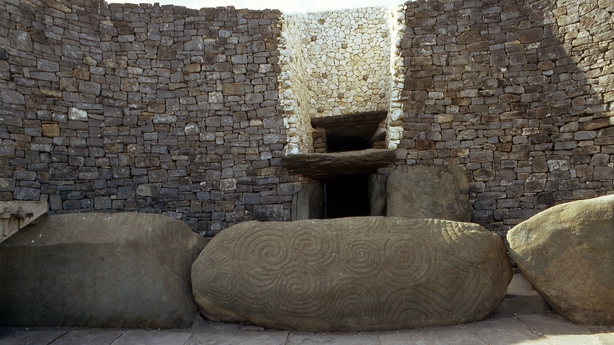
Depending on the weather, 17 minutes of direct sunlight can enter the Newgrange monument through the specially contrived small opening above its entrance known as the 'roof box' and illuminate the central chamber of the passage tomb.
Newgrange, along with the prehistoric passage tombs of Dowth and Knowth, make up the Brú na Bóinne complex, a UNESCO World Heritage Site located around 8km west of Drogheda.
These ceremonial structures, which were built around 3200 BC, are among the most important Neolithic sites in the world and contain the largest collection of megalithic art in western Europe.
'Fortunate' to see sun in chamber
Clare Tuffy is the former manager of the Brú na Bóinne Visitor Centre and presented the OPW's coverage on the livestream of the Winter Solstice this morning.
Ms Tuffy, who first covered the phenomenon in 1981, said the significance of today’s event cannot be overstated.
"This morning, we felt very fortunate to see the sun there at the last minute and it just changes everything. But also, the mornings that it doesn’t work, we have never heard anybody say that it wasn’t worthwhile coming. There is something special about being at Newgrange on these mornings.
We need your consent to load this rte-player contentWe use rte-player to manage extra content that can set cookies on your device and collect data about your activity. Please review their details and accept them to load the content.Manage Preferences
"Being able to track the sun across the sky is not hard, we can all do it, we all know where the sun rises at different times of the year but to build a monument on this scale around that alignment is what is significant.
"There are 200,000 tonnes of stone around that beam of light at dawn at the Winter Solstice. That achievement is amazing. The engineering, the precision, the architecture and the astronomy involved in that is phenomenal."
Newgrange is a burial passageway dating from the Stone Age, making it older than the pyramids at Giza.
However, its true purpose remained undiscovered for many years until, in 1967, archaeologist Dr Michael O’Kelly confirmed local lore that the rising midwinter sun passed through the ‘roof box’ above its entrance, flooding the burial chamber with light.
The solar alignment is a significant astronomical finding of global importance.
Just how exactly our ancestors of 5,000 years ago were able to accurately track the passage of the sun across the sky remains a mystery but an astonishing feat.
For many who gather at Newgrange each Winter Solstice, the event marks a pause or resetting as people celebrate in the knowledge that summer is on its way and longer days are ahead.
How to mark the Winter Solstice's shortest day and longest night





